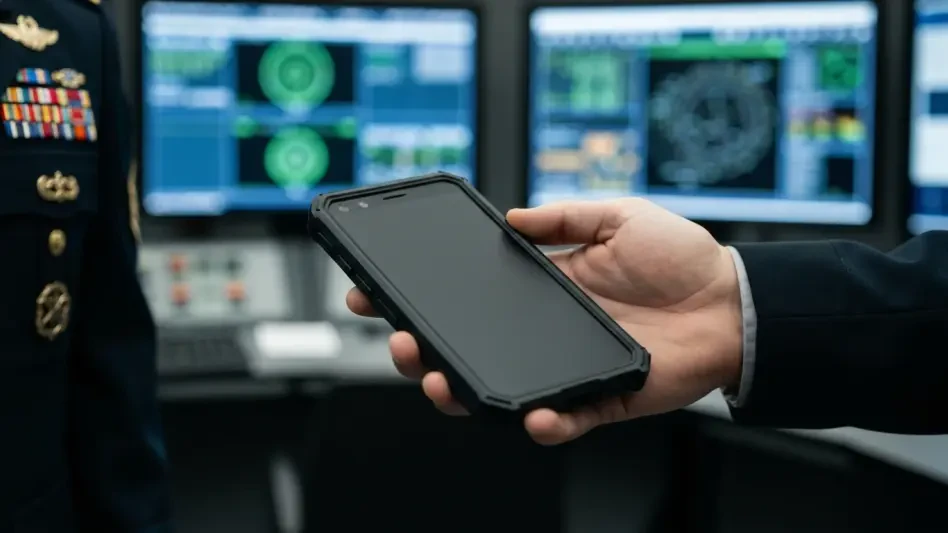In an era where mobile banking has become a cornerstone of daily financial management, the discovery of a sophisticated Android banking trojan in late September marks a chilling escalation in cyber threats targeting unsuspecting users. This malware, distributed through deceptive SMS phishing campaigns, masquerades as a security application to trick individuals into granting extensive permissions. What sets this threat apart is its integration of a hidden Virtual Network Computing (VNC) server, enabling attackers to remotely control infected devices with alarming precision. As mobile devices store increasingly sensitive data, the emergence of such advanced malware underscores the urgent need for heightened vigilance and robust security measures. This article explores the intricate mechanisms of this trojan, its impact on users, and the broader implications for mobile security, shedding light on how cybercriminals are evolving their tactics to exploit trust and bypass traditional defenses.
Unveiling the Threat’s Mechanisms
Deceptive Entry Through Phishing Tactics
The journey of this Android banking trojan begins with a seemingly innocuous SMS message that lures users into downloading a malicious APK file disguised as a security app named “BankGuard.apk.” This phishing tactic preys on the natural inclination to trust messages that appear to come from legitimate sources, often prompting users to install the app under the guise of protecting their device. Once installed, the malware requests critical permissions, such as Accessibility Services and Device Administrator rights, by presenting misleading prompts about optimizing performance. This initial deception is crucial, as it allows the trojan to embed itself deeply within the system, paving the way for more insidious activities. The ease with which this malware exploits human trust highlights a critical vulnerability in user behavior that cybercriminals are quick to manipulate, often leaving victims unaware of the compromise until significant damage has already been done.
Hidden Remote Control Capabilities
What truly distinguishes this trojan from its predecessors is the integration of a stealthy VNC server that operates invisibly in the background on the standard port 5900. This server captures framebuffer data and accepts remote control commands, allowing attackers to interact with the device in real-time as if they were physically holding it. Unlike traditional overlay attacks that merely mimic banking app interfaces to steal credentials, this malware enables dynamic navigation, app manipulation, and even the installation of additional malicious payloads. The VNC module uses a hidden framebuffer to ensure that victims remain oblivious to remote sessions, with no visual indicators betraying the attacker’s presence. This level of control represents a significant leap in malware sophistication, as it bypasses many detection mechanisms by emulating genuine touch inputs, making it challenging for security tools to identify and mitigate the threat effectively.
Implications and Defensive Challenges
Evasion Tactics and Persistence Strategies
A deeper look into this trojan’s design reveals an array of sophisticated evasion tactics aimed at maintaining long-term access to infected devices. The malware encrypts its payload to thwart static analysis, disables protective features like Google Play Protect through hidden system APIs, and employs broadcast receivers to restart its VNC service after device reboots. Additionally, it hooks into Accessibility Services to monitor screen changes, ensuring that attackers can adapt their actions based on real-time user activity. By camouflaging itself under system-level names and hiding its icon, the trojan further reduces the likelihood of detection by unsuspecting users. This combination of persistence and stealth illustrates a deliberate effort by cybercriminals to resist removal, posing a formidable challenge to both individual users and security professionals tasked with safeguarding mobile environments against such advanced threats.
Broader Impact on Mobile Security Landscape
The emergence of this banking trojan signals a troubling trend in the evolution of Android malware, particularly its focus on European banking app users as an initial target. While the current scope appears localized, the potential for wider distribution remains a pressing concern, as attackers could easily adapt their phishing campaigns to other regions. The ability to conduct real-time manipulation through a hidden VNC server elevates the risks of unauthorized transactions, data theft, and further malware propagation, often without the victim’s knowledge until irreversible harm has occurred. This development underscores the limitations of traditional security measures in addressing dynamic, remote-controlled threats. As cybercriminals continue to refine their techniques, the mobile security landscape must evolve rapidly, emphasizing the need for advanced detection tools and user education to combat the growing complexity of threats targeting personal and financial data.
Strategies for Mitigation and Future Safeguards
Enhancing User Awareness and Proactive Measures
Reflecting on the stealth and sophistication of this Android banking trojan, it becomes evident that user awareness plays a critical role in preventing such threats from taking root. Cybersecurity experts stress the importance of educating individuals about the dangers of unsolicited SMS messages and the risks of downloading apps from unverified sources. Campaigns that highlight the need to scrutinize permission requests, especially those involving Accessibility Services or Device Administrator rights, prove essential in curbing initial infections. Encouraging the use of trusted app stores and enabling security features like Google Play Protect are often recommended as first lines of defense. By fostering a culture of skepticism toward unexpected communications, users are better equipped to avoid falling prey to phishing tactics that facilitate the spread of this malware in its early stages.
Advancing Detection and Response Capabilities
Looking back, the fight against this trojan also necessitates significant advancements in detection and response mechanisms within the cybersecurity community. Security tools must adapt to identify hidden VNC servers and anomalous network traffic, as traditional overlay detection methods fall short against real-time remote control capabilities. Collaboration between researchers and mobile platform providers becomes vital in developing updates that can counteract the trojan’s ability to disable protective features and maintain persistence through reboots. Future considerations include integrating behavioral analysis into security software to flag unnatural touch inputs or unauthorized app interactions. By investing in proactive threat intelligence and sharing insights on emerging malware trends, the industry aims to stay ahead of cybercriminals, ensuring that mobile users worldwide can rely on robust safeguards against the next wave of sophisticated threats.








